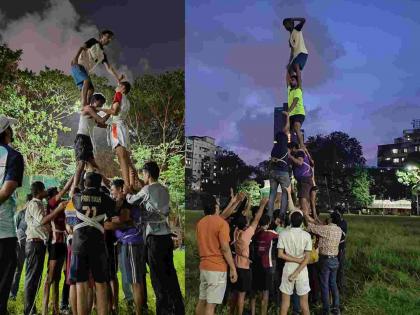Dahi Handi 2024: All You Need to Know About Date, Traditions, Rituals and How It's Celebrated in Different Parts of India
By Lokmat English Desk | Updated: August 21, 2024 16:55 IST2024-08-21T16:52:59+5:302024-08-21T16:55:48+5:30
The Dahi Handi festival is a vibrant celebration that takes place on the day following Krishna Janmashtami, which falls ...

Dahi Handi 2024: All You Need to Know About Date, Traditions, Rituals and How It's Celebrated in Different Parts of India
The Dahi Handi festival is a vibrant celebration that takes place on the day following Krishna Janmashtami, which falls on the Navami date of Krishna Paksha in the Bhadrapada month. In 2024, this festival will be celebrated on Tuesday, 27th August.
The tradition of Dahi Handi dates back to the Dwapar era, inspired by the childhood antics of Lord Krishna, who was known for stealing butter and curd from the homes of the gopis (cowherd women). To prevent him from doing so, the gopis would hang pots of butter and curd at a height, but Krishna, along with his friends, would form human pyramids to reach and break these pots, distributing the contents among themselves. This playful act of Krishna is commemorated every year as Dahi Handi.
Also Read: Janmashtami 2024: Date, Brahma Muhurta, and Rituals for Celebrating Lord Krishna’s Birth
On this day, pots filled with curd, butter, and sugar candy are hung high in temples and on streets. Groups of youth, known as Govindas, form human pyramids to reach and break the pot, symbolizing the playful nature of Krishna. The event is marked by energetic chants, music, and dance, with large crowds gathering to witness the festivities. The team that successfully breaks the pot is celebrated as the winner.
In Maharashtra and Gujarat, Dahi Handi is celebrated with particular grandeur. In cities like Mumbai, Thane, and Pune, the festival takes on a competitive spirit, with different groups, often sponsored by local organizations or political leaders, competing to break the highest and most challenging Handis. These events attract large crowds and are an essential part of the cultural fabric in these regions.
Open in app